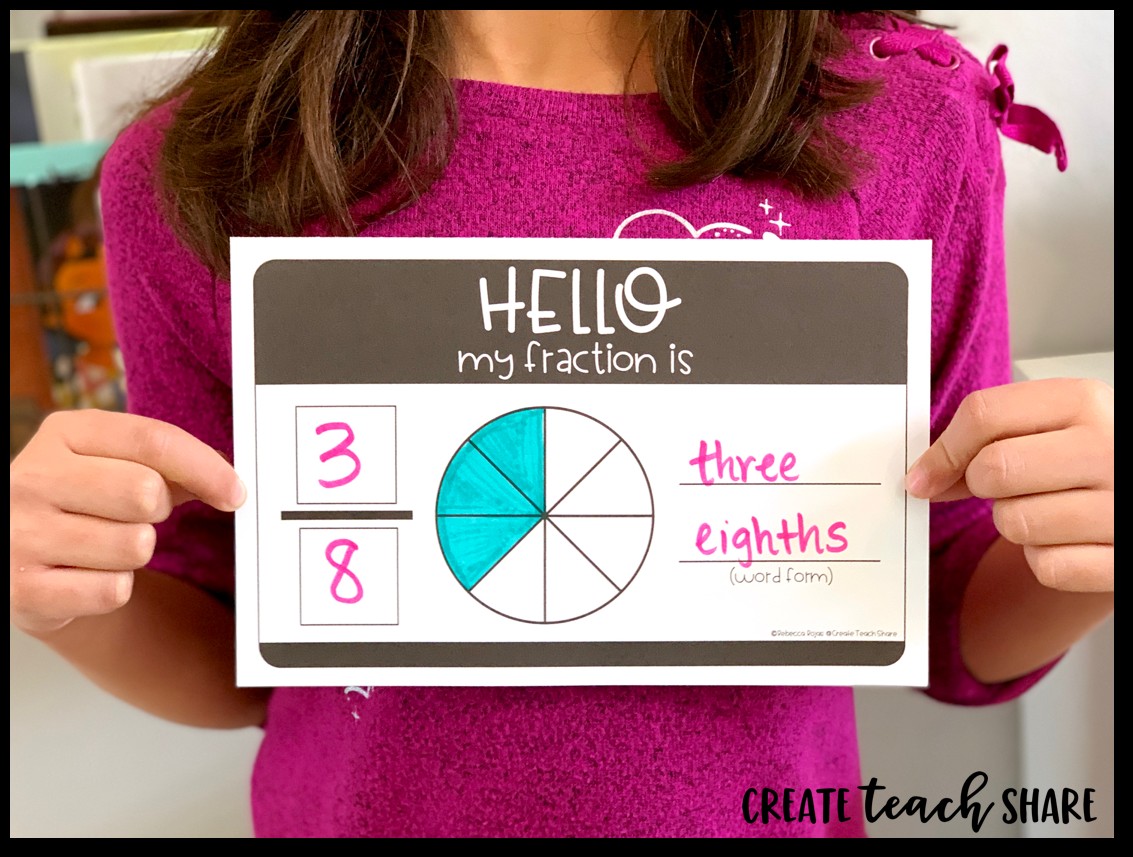Teaching students to confidently compare fractions can be a challenging yet rewarding journey. Many educators find themselves searching for effective strategies to help students grasp these abstract concepts. Fractions can indeed be intimidating for young learners, and as teachers, we continually seek the best methods to foster genuine understanding and comparison skills. Through years of experience in the classroom, I’ve discovered that a blend of visual aids, hands-on activities, and collaborative learning is key to student success with fractions. This guide will explore effective techniques, with a spotlight on using a “Compare Fractions Anchor Chart” as a powerful tool in your teaching arsenal.
Comparing Fractions to One-Half: Building a Foundational Skill
When introducing fraction comparison, starting with visual representations like fraction bars and number lines is a solid approach. However, one particularly effective strategy involves using one-half as a benchmark. Mastering the ability to compare fractions to one-half equips students with an invaluable tool for tackling comparisons involving unlike denominators later on.
Initially, leveraging number lines is incredibly beneficial. As demonstrated in the activity below, students can label number lines to visually pinpoint where different fractions lie in relation to one-half. This visual exercise helps solidify their understanding of fractional values.
While visual aids are crucial, it’s equally important for students to articulate their reasoning. Encourage them to explain why a fraction is greater than, less than, or equal to one-half. Guide discussions around these key points to deepen their comprehension:
- Denominator Focus: Direct students to examine the denominator. Lead them to understand that if the numerator is less than half the denominator, the fraction is less than one-half. Conversely, if the numerator exceeds half the denominator, the fraction is greater than one-half. For example, with 2/5, half of 5 is 2.5. Since 2 is less than 2.5, 2/5 is less than one-half.
- Equivalent Fractions: Introduce the concept of equivalent fractions to one-half. For instance, when comparing 4/6 to 1/2, guide students to find an equivalent fraction to 1/2 with a denominator of 6, which is 3/6. By comparing 4/6 to 3/6, they can clearly see that 4/6 is greater than 1/2.
Interactive Learning: Fraction Name Tags and Collaborative Scripts
To further reinforce comparison skills and provide students with opportunities to verbalize their thinking, consider implementing “Fraction Name Tags & Scripts”. In this engaging activity, each student receives a name tag displaying a fraction, tasked with comparing their fraction to one-half. Students then circulate around the classroom, sharing their fraction and explaining their comparison rationale to peers.
These interactions are enhanced by providing sentence frames or scripts. These scripts can also include prompts for students to compare their fractions to each other. For example, students with fractions like 3/5 and 3/8 would first introduce their fractions and explain how each compares to 1/2. Following this, they would discuss and compare 3/5 and 3/8 directly. This dynamic mingling process ensures repeated practice and varied explanations.
Creating a “Compare Fractions Anchor Chart” Together
After students have actively engaged with comparing fractions through activities like name tags, bring the learning back to a whole-group setting. This is the perfect moment to collaboratively construct a “compare fractions anchor chart”. Anchor charts are visual tools created with student input, making learning visible and accessible.
Guide students to contribute to the anchor chart by sorting the fractions from the name tag activity. As each student presents their fraction card, encourage them to explain to the class how their fraction compares to one-half. Record these fractions on the anchor chart in categories: “Less than 1/2,” “Equal to 1/2,” and “Greater than 1/2.” This collective creation process effectively consolidates the lesson’s key takeaways and provides a lasting reference tool for students.
A well-designed “compare fractions anchor chart” should:
- Visually Organize Information: Use clear categories and headings.
- Include Examples: Showcase a variety of fractions in each category.
- Highlight Key Vocabulary: Include terms like “numerator,” “denominator,” “equivalent,” and “benchmark.”
- Showcase Strategies: Briefly outline the strategies discussed, such as comparing to one-half and using equivalent fractions.
- Be Student-Created: Incorporate student input and handwriting to enhance ownership and engagement.
Independent Practice: Fraction Sort Activity
To assess individual understanding and provide further practice, a “Fraction Sort” activity is ideal for independent work or homework. It can also be adapted for partner work to maintain peer interaction and discussion. This type of activity allows students to apply their fraction comparison skills in a structured format.
This Fraction Sort is part of a comprehensive FRACTIONS UNIT which offers a wealth of resources. A sample of this activity is also available in a FREE Resource Library.
Conclusion: Fractions Can Be Fun!
Teaching and learning fractions doesn’t have to be daunting. By employing the right strategies, such as comparing to one-half and utilizing a “compare fractions anchor chart,” coupled with engaging activities, both you and your students can find joy and success in mastering fractions. These methods not only build a strong foundational understanding of fraction comparison but also foster a positive and interactive learning environment. Explore further resources and activities to continue making fractions an enjoyable and accessible topic for all learners.
[

